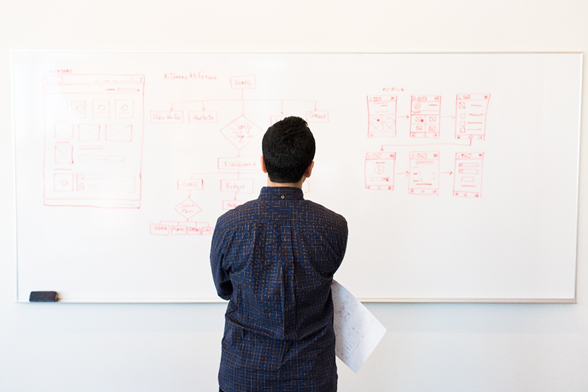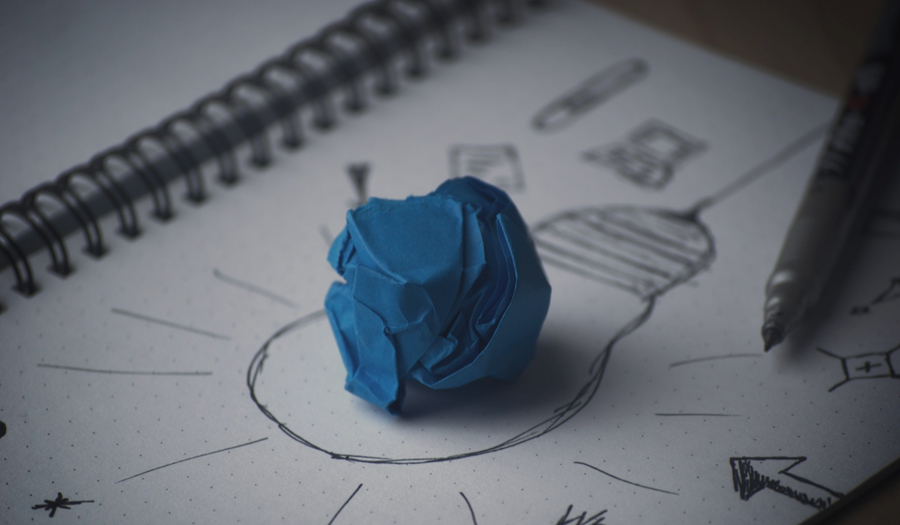Art and science in Design Thinking
Design is an important element for all companies. It is related to aesthetic as well as technical and strategic aspects, since it does not remain...
Design Thinking is a concept that, as time goes by, is becoming more and more popular and necessary in business. It is a methodology, as well as a way of thinking, that guides you to create creative and innovative solutions, products and services.
Today we live in a dynamic and competitive market, so it is common to hear about strategies to strengthen companies, from investing in improving the quality of goods or services, reducing operating costs, exploring blue oceans and even using neuromarketing to make products catch the attention of consumers. However, sometimes it is necessary to take a step back to ask: What do I need to stand out, how can I generate a new idea, and what makes it successful and not die in the attempt?
For these kinds of situations Design Thinking is the perfect tool. In this blog I give you a little guide to help you understand how it works.
Index
On its website, IDEO Deisgn Thinking, defines it as:
"... a discipline that uses the designer's sensibility and methods to match people's needs with what is technologically feasible and what a viable business strategy can turn into customer value and market opportunity." - Tim Brown.
It is therefore, in essence, a process that focuses on understanding an end-user in order to design a unique, customised solution that meets their wants and needs. For this, Design Thinking is supported by a wide variety of tools and techniques, which allow designers to advance during the different stages of the process, discover important information and use it to make the solution being designed successful. It is worth noting that it was conceived to address complex situations, so it can be used to deal with the simplest to the most difficult problems.
As for its usefulness, although it was initially developed with the aim of designing new products, it is currently used in the design of services, processes, business models, value propositions, systems, customer experience, organisational cultures, educational, food and health challenges, among others.
If you want to know more about this tool, I recommend you to visit this blog: Design Thiking Defined

2. What are its stages?
Like any process, it is composed of a series of activities, which are developed in such a way as to meet a specific objective. In this case, the methodology is divided into two phases, corresponding to the discovery of a problem and the design of a solution.
2.1. The discovery of a problem
Two activities can be found within this phase:
Empathy generation: where the stakeholders who are affected by the development of the solution must be identified. This in order to try to generate empathy with them, putting ourselves in their shoes, in order to understand what their main pains, desires and needs are. For this we have tools such as: interviews, observation, focus groups, Buyer Persona, Customer Journey, among others.
Problem definition: here we organise, filter and analyse the information obtained from the previous activity, in order to identify the problems that will give us the opportunity to design a unique, creative and innovative solution. Some tools we can use here are: empathy maps, Ishikawa diagrams, impact and effort matrix, among others.
2.2. Designing a solution
At the end of the problem definition, we enter into the design of the solution, where we find three other activities:
To learn more about the stages I leave you this blog: 5 Stages in the Design Thinking Process

3. How to make it work?
Every Design Thinking project goes through the previous stages, however, it is also necessary to consider certain points so that the process can move forward.
Here is a blog with a different content, in case you are wondering why this methodology works: Why Design Thinking Works.

4. The key to successful Design Thinking
It is useless to have an excellent design process, the necessary resources, the perfect work team, an inspiring space and a designer's mentality if the three key pillars for a solution to be truly achievable are not clear.
It is by finding the balance between the three pillars that we arrive at what is known as a sweet spot. Failure to meet one of these can lead to failure or an unachievable solution.
From all this I hope you will take away one idea, there is a reason why Design Thinking is being used more and more in the business world. It is a methodology, a process, that was developed based on empathy, sensitivity and collaboration. It is a tool that can help solve a variety of problems through its structure, generating a competitive advantage by positioning yourself with a product that is different from the rest. It does not help you to design to solve a single need, it invites you to generate real value, so that those people who are looking for a solution to a problem also find something unique and special that makes them happy. Something that leaves them with a good memory of your business.
Read more: Art and science in Design Thinking

Design is an important element for all companies. It is related to aesthetic as well as technical and strategic aspects, since it does not remain...

Do you think all people buy the same way? Let's see, will a teenager with a summer job have the exact needs of a 30-year-old adult? Will the content...

Social media has become a critical medium for key contact with our prospects and potential customers, this contact is formed by actively researching...